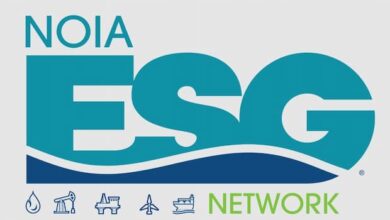Drilling Ahead: Piper Alpha 25 years on
By Mike Killalea, editor & publisher
The Piper Alpha survivor recalled receiving a safety orientation – 10 years earlier. But not that day. Not 6 July 1988, the date of the worst tragedy in the E&P industry, when 167 workers perished.
The North Sea was a different place a quarter-century ago. “I feel sure (that) industry had not realized the enormity of hazard potential out there,” Steve Walker, head of strategic intervention, HSE Energy Division, told DC.
Piper Alpha was no outlier, in other words. No major-hazard legislation existed. Workforce engagement and procedures for permitting work and emergency response were conspicuously absent.
Reverberating power
“Piper Alpha was our Macondo, 20 years (earlier),” Mr Walker said. “It was different but still had the power.”
Its power still reverberates. In June, Oil & Gas UK convened Piper 25, a three-day remembrance that drew 750 people. The array of high-powered speakers included Mr Walker, Lord Cullen of Whitekirk, leader of the eponymous inquiry, and IADC president/CEO Stephen Colville. A subsequent workforce engagement day drew 550 workers.
The Cullen Inquiry into Piper Alpha produced 106 recommendations, including mandating safety cases for the UK North Sea and transferring responsibility for safety enforcement from the Department of Energy to HSE.
Lord Cullen quickly realized that the key was improving safety management.
“Management shortcomings emerged in a variety of forms,” he said at Piper 25 – no procedure for shift hand-overs, an inadequate and often ignored permit-to-work system, poor training and more.
“Lessons of previous accidents had not been followed through,” Lord Cullen said.
“The safety case was ordered by Lord Cullen precisely because the previous regime had utterly failed,” remarked Taf Powell, expert adviser to the European Commission for offshore drilling and production and former director of the UK HSE’s Offshore Safety Division.
Industry buy-in
To industry’s credit, pretty much everyone bought into the Cullen vision, Mr Walker said. Some companies, driven by fervor to create a safe work place, went beyond existing standards – for example, installing blast walls on MODUs.
“This is far beyond what the MODU Code requires,” noted Alan Spackman, IADC vice president-offshore division.
IADC was an industry leader working toward safety case development and implementation. “IADC was pretty positive in getting the North Sea safety case sorted out,” Mr Walker said.
IADC subsequently refined its work, developing its IADC HSE Case Guidelines for both offshore and land drilling.
Exporting Cullen
So if safety cases are so great, why haven’t they been adopted more widely?
“It’s been a beacon sent out to the world, but some have yet to see the light,” Mr Colville quipped.
Mr Walker chuckled at the question but quickly rattled off a few key locations where safety cases rule.
He pointed first to the most recent disciple – the European Union, which in May passed its offshore safety directive, using the UK system as a blueprint. Through the EU, the safety case regime will expand beyond the North Sea to encompass the Mediterranean, Western Atlantic and parts of the Black Sea.
“That’s pretty good,” Mr Walker said.
IADC played a significant role in honing the EU legislation, working closely with OGP for more than two years.
“Our goal was to ensure that the legislation was framed as a directive, (which) allows member states up to two years to implement it, with flexibility to conform with existing national laws,” said Brian Petty, IADC executive vice president-government and regulatory affairs. (See article on p.160.)
Australia joined the ranks of HSE case believers following the disastrous 2009 Montara blowout. (Safety cases had been implemented for installations but did not fully address the well itself.)
The IADC HSE Guidelines, meanwhile, have been embraced by NOCs and governments worldwide. (See QR code below.)
As for the USA, well…. Observed Mr Walker, “SEMS is one brick in the wall. There are a lot of holes in the wall.” SEMS, or Safety and Environmental Management Systems, is mandated in the US Gulf of Mexico.
He notes, however, that some major operators have internalized the safety case approach for operations worldwide.
Never again?
Cullen, focusing on fixed platform safety, did not address all possible hazards. Mr Walker pointed to the environment and wells as areas to address.
“The next disaster will be something entirely different,” he predicted.
But Cullen stands as a landmark for this industry.
“Cullen and Piper Alpha were such game-changing events,” Mr Walker said. “It’s very right that we should mark this 25th anniversary and the people who were killed, so as not to let it happen again.”
Mike Killalea can be reached via email at mike.killalea@iadc.org.




